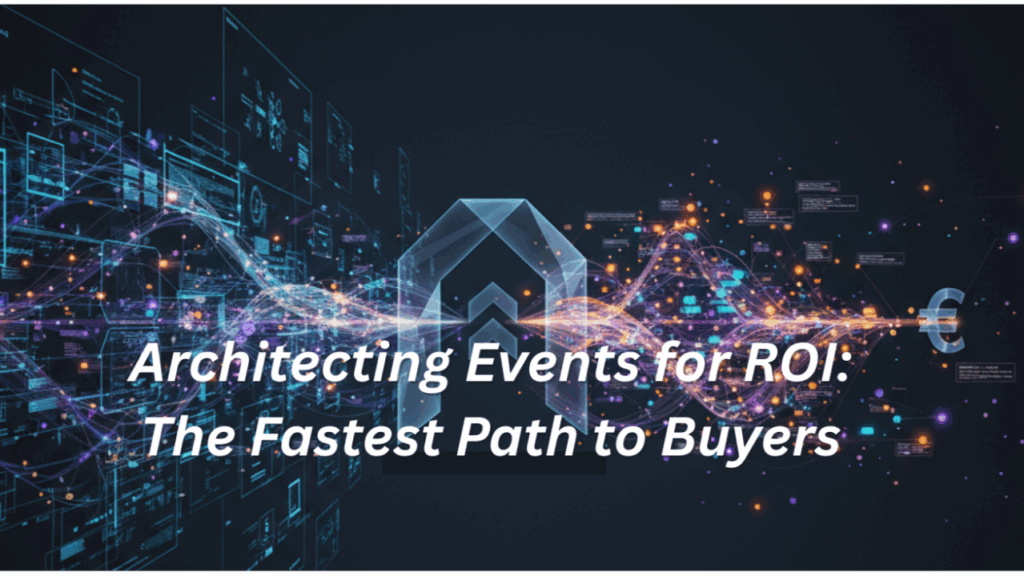The biggest advantage of running your own events is owning the cycle and the data. You design the experience to deliver value for attendees, and you build the marketing cycle to generate signals about who’s ready to buy.
I witnessed this firsthand at a sales kickoff I sponsored with several thousand attendees. The agenda wasn’t landing. Our intuition and the data told us the real story that we were off course. Because I was in control and not subject to what a third-party thought, we shifted the content in real time. The event was a success because we adjusted to what the audience needed. That level of agility only comes when you own the event.
Buyers, Not Tire Kickers
People who show up at an event are invested. They’ve given their time, money, and attention and expect a return in the form of useful sessions, workshops, and connections.
Compare that to someone who clicks “download” on a piece of content. There is little other than providing an email address that represents an investment in your solution.
Event attendees give off clear signals. Questions about pricing, deployments, integrations are the clues that they’ve moved past assessment and are seriously considering how to implement your solution.
The Mistake Most Companies Make
Registration numbers and attendance metrics are often treated as results, but those are deceiving. A big-name speaker might draw a crowd, but that doesn’t translate to purchasing.
Purchasing happens when you cater to buyer sentiment at every point in the event cycle. The organizations that do this well start with detailed goal setting long before they lock down dates or venues. That’s the difference between an event designed for ROI and one chasing vanity metrics.
Architecting for ROI
A strong attendee experience is expected. What separates winning events is how you use data throughout the cycle to anticipate buyer needs and move them from the marketing funnel into the sales funnel.
Formats matter, but only if they’re aligned to where the buyer is. Roundtables, workshops, 1:1 matchmaking can all work, but only if they move the buyer to the next milestone. Misalign them, and you create confusion and delay.
The best call to action is immediate. When conversations at an event are captured in real time and pipelined directly to sales, you keep momentum alive. That’s how you turn dialogue into pipeline and closed business.
Proof It Works
The past few years have seen heavy overinvestment in trade shows. The problem is proving ROI when you don’t control the event or the data.
Enterprises that run hundreds or thousands of their own events gain something different: cumulative differentiation. Each event adds to the data, the relationships, and the institutional knowledge. That’s leverage that compounds over time.
The metrics that matter are sales pipeline metrics. Did the event accelerate deals? Did it deliver higher-quality opportunities than other channels? In a digital world where prospects can stay invisible, the in-person event gives you visibility including data, emotion, and the chance to show passion for your solution. Other channels can’t compete with that.

Scale Turns Events Into a Moat
Take two Fortune 500 companies, each running 1,000 events a year.
Company A closes deals 5% faster because of better event signals:
- Average cycle time drops from 120 days to 114.
- Over thousands of deals per year, this compounds into millions of dollars in earlier revenue recognition and reinvestment capacity. The gap widens every year as more cash gets generated and reinvested.
You can copy the format of an event or even try to mimic the program. But the format is superficial. The real advantage comes from the wiring of each of the event components and how the event connects into data, sales, and marketing infrastructure.
That wiring is the difference between a four-cylinder engine and a V12. Both will run. Only one has the power to lap the competition.

The Bottom Line
Here’s the acid test: Do you know significantly more about your attendee’s buying propensity after the event than before?
If the answer is no, the event didn’t deliver. If the answer is yes, you’ve built an accelerator that feeds pipeline, delivers buyers, and compounds into durable competitive advantage.
[This article was first published on LinkedIn on September 17, 2025 by Peter Micciche, CEO of Certain]
